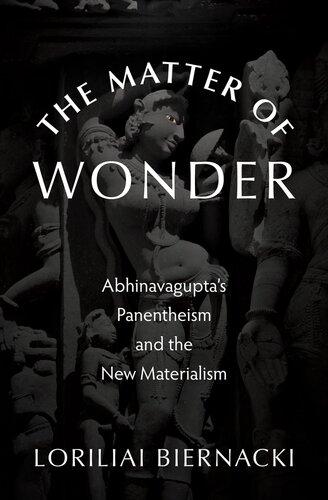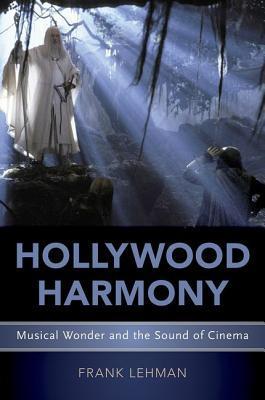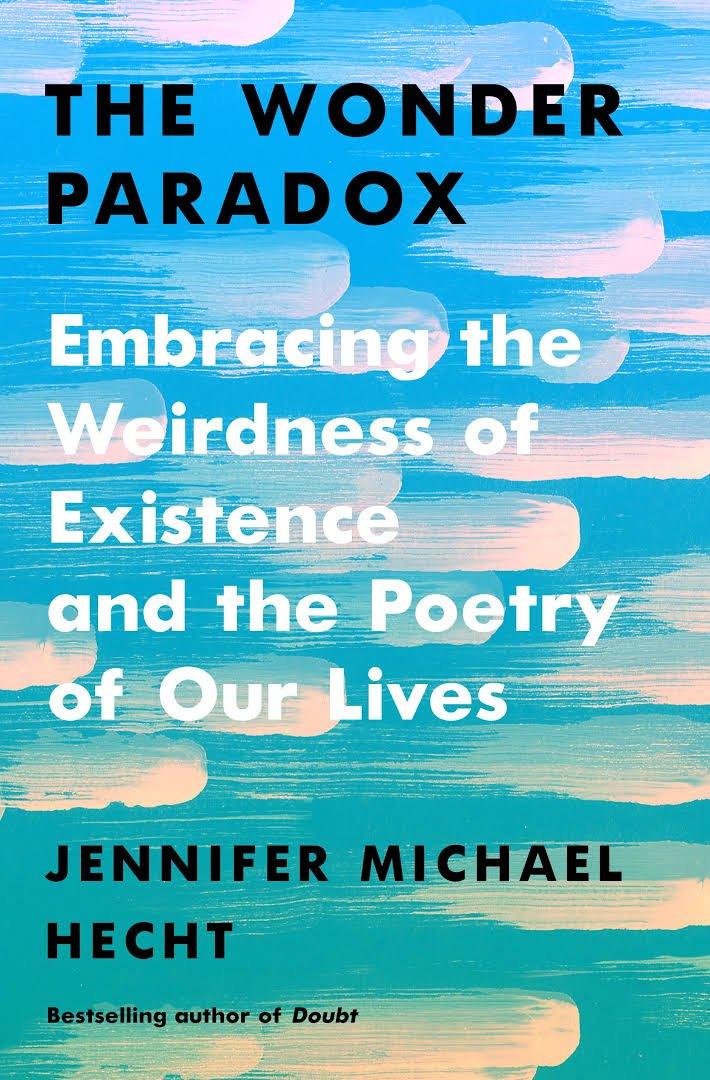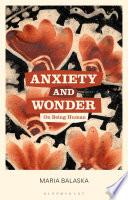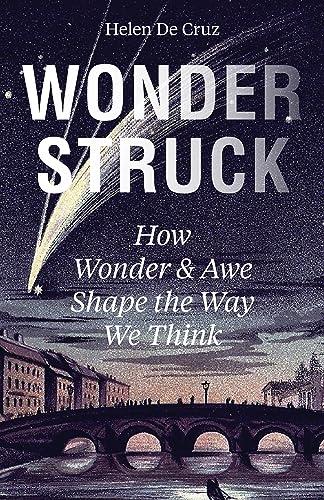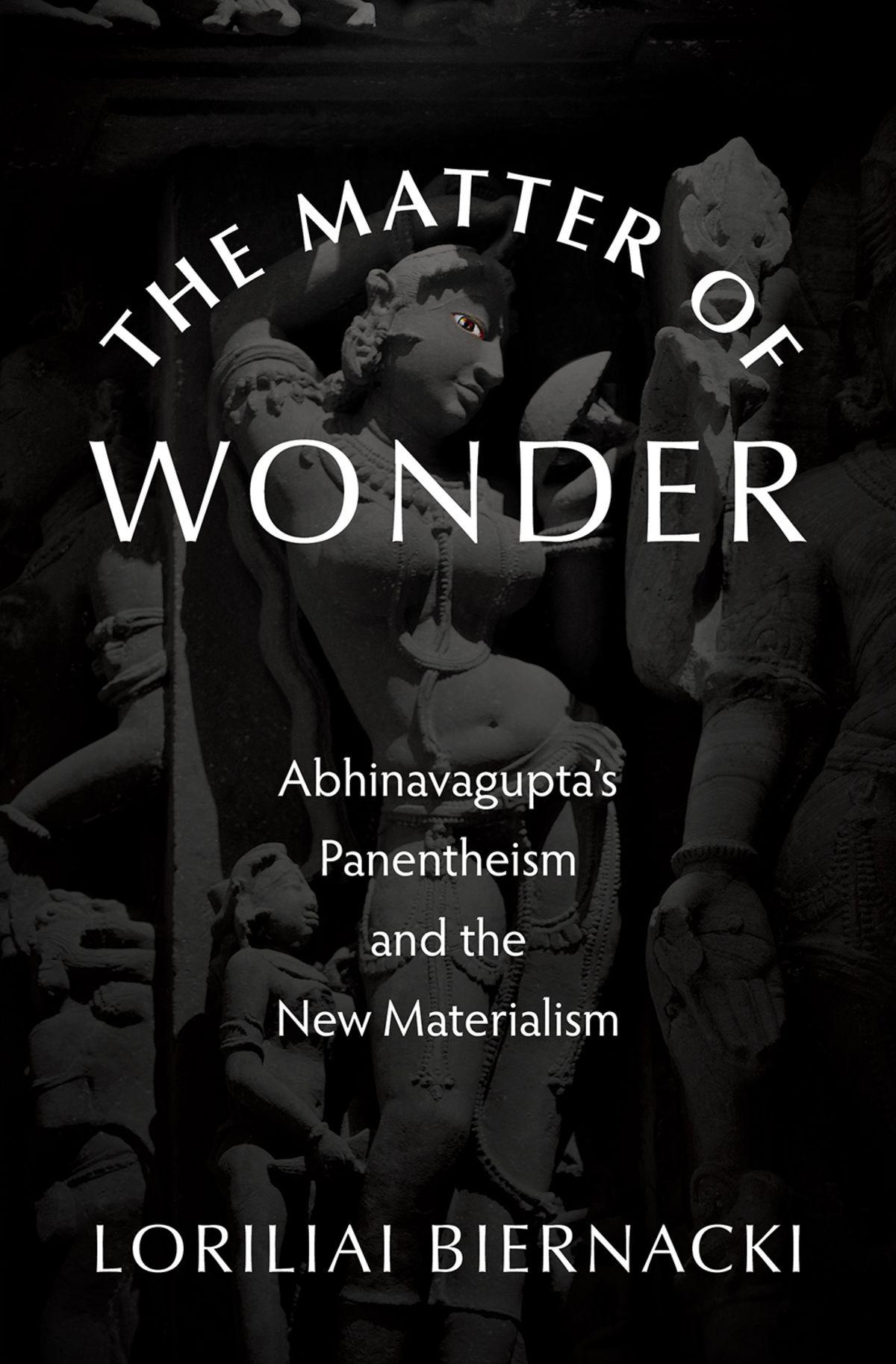Introduction
The Matter of Wonder: Abhinavagupta’s Panentheism and New Materialism
I bow to him who pierces through and pervades with his own essence this whole, from top to bottom, and makes this whole world to consist of Śiva, himself.1
—
Abhinavagupta
We may someday have to enlarge the scope of what we mean by a “who.”
John Archibald Wheeler
Even down to a worm when they do their own deeds, that which is to be done first stirs in the heart.2
Abhinavagupta
If thou be’st born to strange sights, Things invisible to see, Ride ten thousand days and nights, Till age snow white hairs on thee, Thou, when thou return’st, wilt tell me, All strange wonders that befell thee
John Donne
In this book I argue that the panentheism of an 11th-century medieval Indian Hindu thinker can help us to rethink our current relationship to matter. Writing in northern India from 975 to 1025 CE, the Kashmiri philosopher Abhinavagupta (950–1016) articulated a panentheism—bothseeing the divine as immanent in the world and at the same time as transcendent as a way of reclaiming the solidity, the realness of the material world.3 His theology understood the world itself, with its manifold inhabitants, from gods to humans to insects down to the merest rock as part of the unfolding of a single conscious reality, Śiva. This conscious singularity the word “god” here does not quite do justice to the pervasive panentheism involved—this consciousness, with its capacity to choose and will, pervades all through, from top to bottom; human and nonhuman, as Abhinavagupta tells us, “even down to a worm—when they do their own deeds, that which is to be done first stirs in the heart.”4 His panentheism proposed an answer to a familiar conundrum, one we
still grapple with today—that is: consciousness is so unlike matter; how does it actually connect to the materiality of our world? To put this question in more familiar 21st-century terms, how does mind connect to body? This particular question drives the comparative impetus for this book.
Abhinavagupta
A towering figure in India’s philosophical landscape, influential far beyond the boundaries of his native Kashmir in the thousand years since his death, Abhinavagupta wrote extensively on Tantra, an innovative religious movement that began in India in the first half of the first millennium.5 Tantra as a religious system cut across religious boundaries, steering Buddhist groups and sectarian Hindu groups, Śaiva and Vaiṣṇava, and even an abstinency-minded Jainism6 away from an earlier ascendant asceticism to a philosophy and a praxis more keenly focused on the body as part of the path of enlightenment and on ritual, especially ritual involving the body.7 Perhaps in keeping with Tantra’s attention to the body, it may not be surprising to find Abhinavagupta exercising his keen intellect as well in the domain of the senses, writing also on aesthetic theory.8 And while Abhinavagupta is especially well known today for his writing on Tantric philosophy and ritual, it is probably fair to suggest that historically in India his pan-India fame rests especially on his writings on aesthetics, where his theoretical interventions shaped aesthetic understanding through the following centuries.9 This material, sensual orientation shapes a physical portrait we have of him as well. One of his devotees, as Pandey tells us, a disciple who studied directly with Abhinavagupta, Madhurāja Yogin, gives us a visualization of Abhinavagupta.10 Certainly, the intervening centuries make it hard to accord it any genuine accuracy; still the image we have is evocative, redolent of a sensual, physical embrace of the world. His long hair tied with a garland of flowers, bearing the insignia of a devotee of the god Śiva, rudrākṣa beads, and three
lines of ash on his forehead, he plays a musical instrument, the vīna, and in an anticipated Tantric gesture, two women are at his side holding lotus flowers and the aphrodisiac betel nut.11 Portraits aside, Abhinavagupta’s writing is compelling and fresh even after these ten centuries precisely because of Abhinavagupta’s ability to weave philosophy within a mundane material awareness.12 Keen in its psychological comprehension, his acute sensibility of how the mind works can help us navigate our own contemporary engagement with the matter all around us.
My Argument
Particularly for a New Materialism, I propose that Abhinavagupta’s articulation of panentheism, centered around a foundational subjectivity, gives us a first-person perspective that may offer a helpful intervention for our world today as we rethink our own relationship to matter, to the natural world around us, other humans and nonhumans, and the rapidly disappearing insects and worms that cross our paths.13 Abhinavagupta’s panentheism postulates a single reality, Śiva, which unfolds out of itself the wonderful diversity of our world. He tells us that
the category called Śiva is itself the body of all things. “On the wall [of the world which is itself Śiva] the picture of all beings appears, shining forth”— This statement indicates the way that all these appear.14
His panentheism aims to keep our sights on the world, with all its matter and multiplicity, as real. A tricky endeavor for a singular reality, Śiva, a nondualism.15 Classical, familiar attempts at nondualism try mostly to show us how our idea of the multiplicity of the world as real is just a mistake in judgment. Abhinavagupta’s panentheism instead reformulates the relationship between matter and consciousness. He draws on psychological, linguistic modes, the idea of subject and object, to tell us that we find nested within materiality the possibility of a first-person perspective, even in a
mere rock.16 We find consciousness at the heart of matter. Rethinking the boundaries of life, matter, and consciousness, his strategy offers a way to think through materiality, for a New Materialism in particular, compelling in its decentering of the human. I focus on key elements of Abhinavagupta’s panentheism to address central issues for a New Materialism. First, his use of wonder (camatkāra), I propose, serves to alter our vision of matter, pointing to its essential liveliness. Moreover, it reinscribes transcendence within a bodily subjectivity. Second, I suggest his use of the term vimarśa, a kind of active awareness, can help us think through how we get the idea of sentience, that is, to think through the relationship between what is living and what is not. Third, I propose that he uses his inherited cosmological map of what there is (familiar to students of India as the tattva system) to map phenomenologically how this originary consciousness, Śiva, progressively transforms its original subjectivity in stages to become objects, the materiality of earth and water that make up our world. Fourth, in addition, I suggest that he draws on the tattva system to chart how we get the many out of the One. Fifth, I propose that we may read the theology he gives us of the subtle body as a way of affording intentionality to the affective processes of the body, outside of human egoic intentions.
Finally, I propose that Abhinavagupta’s strategy for connecting consciousness to materiality can instruct our own century’s adoptions of panpsychism and dual-aspect monisms, models that contemporary philosophers and scientists use to solve the problem of how life and consciousness relate to mere matter—particularly in terms of our current enthusiasm for ideas of information. In this, I use Abhinavagupta’s philosophy to address issues relevant for us today, and I do so comparatively, drawing on our own current cultural preoccupations to frame his panentheism.17 In sum, I argue that Abhinavagupta’s panentheism is too important a resource to not be used in our current construction of our world, particularly in the face of our rapidly increasing capacity to manipulate matter—and, indeed, in view of the consequent ecological results.
In the five chapters that follow I present an outline of Abhinavagupta’s panentheism, charting how his panentheism maps the relationship between materiality and consciousness, between immanence and transcendence. But my particular focus is on the material side of the equation. Abhinavagupta’s nondualist panentheism has, assuredly, been invoked more generally in the context of an idealism, that is, more on the consciousness side of things.18 Here, I contend that paying attention to his sophisticated articulation of materiality can help us in our own understanding of what matter is and how it matters. To get a feeling for the importance of matter in his nondualism, we can compare him with another nondualist, the great nondual mystic of the 20th century, the South Indian Ramana Maharshi (1879–1950). Ramana Maharshi’s philosophy is often aligned with the nondualism of Advaita Vedānta, the well-known Indian philosophical conception, in a nutshell (though this is perhaps too brief), that the world we experience here is illusory, is Māyā. Ramana Maharshi instructs us to ignore the world. We do not need to know about the world, he tells us; we just need to know about the Self.19 He instructs us
[t]o keep the mind constantly turned inwards and to abide thus in the Self is the only Self-enquiry. Just as it is futile to examine the rubbish that has to be swept up only to be thrown away, so it is futile for him who seeks to know the Self to set to work enumerating the tattvas that envelop the Self and examining them instead of casting them away.20
In other words, we do not need to know what our world is made of in order to get enlightened. It is rubbish, futile knowledge; simply toss it out. In contrast, Abhinavagupta tells us:
Now, it would not be correct to say that for our present topic i.e., to convey the recognition of the Lord it is not necessary to ascertain the world as object to be known; [this is not correct, because] only to the extent that one makes the world into an object, to the extent that it is known, can one then transcend the level of object, of thing to be known and allow the true sense of the knower to take root in the heart, its fullness being grasped by mind, intellect and ego.21
Abhinavagupta addresses head on the assumption that enlightenment means we drop the idea of a world out there. Even if his readers might think that the path to enlightenment means concerning ourselves only with the highest, the recognition (pratyabhijñā) of the Lord, as we hear in the echoes of Ramana Maharshi’s advice, Abhinavagupta instead reminds us that the fullness of insight also includes the materiality of the world. Only by knowing the world do we allow the real sense of the knower to blossom in the heart. It is, of course, important not to understate the legacy of transcendence and idealism that Abhinavagupta inherits and embraces. However, in this book I will focus especially on the materialist side of Abhinavagupta’s thought. Rather than on the wall of the world that is Śiva, my center of attention is instead on the fantastic diversity of the picture, which has mostly been neglected in much of the excellent work on this thinker.22
My Primary Source Material
My thinking on Abhinavagupta and his perspective on the materiality side of things has been especially influenced by my primary source material. I have worked particularly with the third section of one of Abhinavagupta’s last works, his massive Īśvara Pratyabhijñā Vivṛti Vimarśinī (Ipvv), the Long Commentary on the Elucidation of Recognition of the Lord, composed in 1015 CE. 23 The Sanskrit text, handed down in manuscript form through generations from Abhinavagupta’s time, was first published in Kashmir in three volumes from 1938 to 1943; I draw primarily from the third section, titled the Āgamādhikāra, comprising 100 pages of Sanskrit.24 Abhinavagupta’s text is a commentary; he provides explanatory notes to a text written approximately 50 years earlier by his great grand teacher Utpaladeva, the Īśvarapratyabhijñāvivṛti (Elucidation of Recognition of the Lord), which is itself a commentary on a shorter set of verses composed by Utpaladeva, Īśvarapratyabhijñākārikā (The Verses on Recognition of the Lord).
Thus, we have a commentary on a commentary on an original set of verses. Abhinavagupta also wrote a shorter commentary on Utpaladeva’s compelling verses, and Utpaladeva wrote his own autocommentary as well.25
The Āgamādhikāra deals particularly with received knowledge, what the tradition has passed down. Āgamais typically translated as “scripture” or “revealed text.” Abhinavagupta and Utpaladeva, however, use the term not so much to focus on particular scriptures or textual sources, but rather to discuss knowledge of the cosmos, the cosmology that we find in the tattva system, the classification of all that exists, handed down by tradition.26 Abhinavagupta explicates the received tradition of cosmology, the tattva system, within his understanding of a subject–object continuum, offering us a map of how an originary consciousness, Śiva, unfolds to become the myriad objects that make up our world. The two chapters of the Āgamādhikāra chart out what the world is made of, following Abhinavagupta’s Tantric classificatory scheme of cosmology, the tattvas, and then addresses the tradition’s understanding of different modes of subjectivity in relation to the objects we find in the world. Describing these two chapters, Abhinavagupta tells us:
So far [Utpaladeva] has explained how the group of tattvas exist as object and immediately preceding that he explained the nature of the subject also. Here, because of its importance, the text reveals the essence of the object because it is helpful for the recognition of one’s own divinity. So it is a topic worth delineating in detail.27
Again, we see Abhinavagupta telling us that we need to know the world; we need to know the essence of the objects we encounter if we want to achieve our own enlightenment. The Āgamādhikāra charts out the nature of the world, the materiality all around us.
Abhinavagupta’s Long Commentary is interesting and helpful because he at times offers long and insightful expositions on various ideas that we do not find anywhere else; it is also difficult because Utpaladeva’s autocommentary, the Elucidation(vivṛti), has been lost. As a result, Abhinavagupta’s Long Commentary makes reference
throughout to particular specific words whose source is no longer extant. Still, many of his long excursions are coherent and compelling without recourse to Utpaladeva’s lost text; the situation is also remedied to some extent by the availability of Abhinavagupta’s earlier shorter commentary (Ipv). A translation for the Long Commentary as a whole and for this third section, the text of the Āgamādhikāra, is not yet available.28 For this reason, when I offer translations drawing from Abhinavagupta’s writing and particularly this text, the Āgamādhikāra, to explicate Abhinavagupta’s thought, I give the passages of Sanskrit in the notes section at the end of each chapter. All translations are my own.
Panentheism and the New Materialism
Abhinavagupta’s panentheism maps out the nature of matter, telling us we need to understand matter if we want to understand ourselves and our own enlightened divinity. This focus on what matter is, I suggest, can help steer our own thinking as we face a rapidly crashing environment and help to rethink how we relate to our material world. For a nascent New Materialism in particular, keenly attuned to how the way we think about matter directs what we do, Abhinavagupta’s panentheism with its sophisticated articulation of subjectivity in relation to the matter of our world may help to refine our contemporary attitudes toward the rocks and insects and worms all around us. Of course, I am premising this suggestion on the provocative thesis that Lynn White articulated all those years ago—that our model of the world, our theology or cosmology, sets the stage for how we treat the matter of our world.29 Indeed, as the Oxford English Dictionary attests in its helpful list of dated examples of usage, as early as 1991 we start to see panentheism associated with a way of addressing our environmental challenges.30 What is it about panentheism that makes it environmentally friendly? The answer to that question, I might venture, has to do with the idea of linking things that seem
quite different from each other. Panentheism links the material world to something that is quite apart from its materiality, an outside force, a divinity, that transcends matter altogether. This cozy material affinity is indeed encoded linguistically in the word. As a concept itself, the prefix pan—that is, the world, matter, and materiality—is affixed to theism, the transcendence of deity. The two are not made into one, merged as in pantheism, but rather the materiality of the world and the transcendence of deity are linked, yet still held apart in a productive tension. In this sense, panentheism operates as a ligature holding in tension both the many and the one, both matter and transcendence.
I suspect that what made panentheism particularly attractive for Abhinavagupta in the 11th century was the ligature, its rather Tantric assertion to have one’s cake and eat it too—that is, its claims toward both the materiality of the world andthe transcendence of divinity.31 Panentheism can give us both consciousness and matter, not dissolving one or the other. Consciousness as something outside transcends the materiality of our world, yet it is held in productive tension with the world, not erasing the messy matter of immanence.32 In this respect, panentheism points to a way of thinking about the link between matter and consciousness, a metaphysical hitching together of two seemingly polar opposites. This book as a whole also proposes a similar sort of ligature, a comparative project bringing together disparate elements in the hope of a productive tension, an 11th-century Tantric on the one hand and a contemporary New Materialism on the other. It focuses on our contemporary concerns around what is sentient—animals? viruses? artificial intelligence?—set in relation to Abhinavagupta’s articulation of what gives rise to sentience. And the book deals with our current conceptions of information as data—articulated in juxtaposition to Abhinavagupta’s theology of mantra, mystic sound.33 In this sense, the comparative project that unfolds in the following five chapters operates in the style of the 17th-century English Metaphysical poets, like John Donne, hitching together disparate things to reveal at the heart of things a sense of wonder.
Chapter Outline
Chapter One looks at Abhinavagupta’s conception of subjectivity (ahantā) in relation to matter, and specifically in terms of what it can impart for a New Materialism. Subjectivity, (ahantā), a first-person person perspective, works as the fulcrum of his panentheism. What makes us sentient depends on our capacity to identify with the sense of “I,” rather than the “this” (idantā), a state of being an object. Abhinavagupta reminds us that attention to subjectivity is needed for thinking through our relationship to matter. Notably, Abhinavagupta uses psychological, linguistic modes, rather than our more familiar ontological distinctions, to parse out the differences between humans and nonhumans and matter. Not ontologically driven, this modal formula, rather helpfully for a New Materialism, decenters the human in our cosmology. Humans and rocks alike share a fluid ability to move between being a subject or an object, giving us consciousness innate to matter. At the same time that Abhinavagupta asserts an innate capacity for sentience, even for things that seem to be dead objects, like rocks, he also proposes a way to differentiate between things that are sentient and things that are not. With this distinction we also examine how Abhinavagupta helps us to think through how we get multiplicity within a philosophy that claims there is only one reality. Throughout this chapter I offer a comparative assessment of Abhinavagupta in relation to a New Materialism. Walt Whitman, for instance, a figure frequently invoked for a New Materialism, also poses an expansive first-person perspective in his poetry, a similarity, I suggest, that shares with Abhinavagupta’s first-person-centered philosophy a capacity to enliven objects.
Chapter Two begins with a discussion of how science and scientists, from Carl Sagan to some contemporary neuroscientists such as Anil Seth, invoke wonder as a way of bringing in an atheistic transcendence. This chapter delineates Abhinavagupta’s formulation of wonder (camatkāra), arguing that the phenomenology of wonder serves to underscore an inherent subjectivity, even in mere matter.
Tracing out the Indian genealogy of wonder through its roots in cooking, we see Abhinavagupta emphasizes the sensory and sensual elements of wonder. At the same time, Abhinavagupta’s conception of wonder offers a way of delineating between what is alive and what is not in a way that offers a permeable boundary between mere matter and life. Wonder happens, Abhinavagupta explains, when the “I” can reflect on itself; it is the signal of life, sentience. With a keen phenomenological attention, Abhinavagupta’s analysis of wonder turns on its head the way we usually think of wonder. He tells us that the power of wonder is not so much that it offers a transcendence that leaves behind the fetters of an earth-bound material body, but rather that wonder instead alters our vision of matter, pointing to its essential liveliness. This in turn alters how we understand transcendence. It is not an up and out situation, leaving behind sluggish dumb matter; instead it points to an inwardness, a heightened subjectivity. Abhinavagupta rewrites transcendence in one other way as well. We typically imagine transcendence as a space of timelessness, above the change of the world. Abhinavagupta instead rewrites time back into this transformed notion of transcendence.
Chapter Three begins with a discussion of Darwin’s description of his loss of faith when he witnesses the parasitic wasp infecting the caterpillar. How could a benevolent God create this sort of monstrosity, he asks—a parasitic wasp inside the caterpillar, two beings, one body, boundaries transgressed. Here the focus is on the boundaries of bodies and agency. In this context, I discuss Abhinavagupta’s idea of the subtle body as a body also inhabited by something other than the person claiming the body. Here, however, in this Tantric case, the other consciousness inhabiting the body is not an invading parasite directing the body, but an image of deities directing the body. I suggest that Abhinavagupta’s theological inscription of deities driving human action adds an important element to the notion of bodies and matter. Abhinavagupta’s theology offers a perspectival shift toward recognizing the body’s own claims to intentionality, an intentionality that typically is only accorded to mind or spirit. In this sense, the panentheism out of
which Abhinavagupta fashions his conception of the subtle body enfolds within it an upgrade for the idea of bodies, of matter. Theology here registers a respect for the affective processes of the body. Locating gods in the body tells us that the mind is not the master in the house; rather, sentiency, will, and desire arise throughout the body’s functions, separate from the mind’s desires. Moreover, this theology of the body proposes these multiple affective registers in a way that does not dwell (neither lamenting nor rejoicing) on the subsequent disappointment and loss of the sovereignty of the ego and its free will. So while a contemporary thinker like Brian Massumi strives to find a model to understand the complex, refractory affective flows of the body in a language of the virtual, Abhinavagupta instead reads this complexity of multiple affective flows through a lens of the forces of deities with their own conscious trajectories. In this respect, this panentheist theology affords a foundational liveliness to the multiplicity of agencies that make up the body. Here it is referenced in Abhinavagupta’s map of the subtle body, which sees the body itself as an ecology of beings, materially embedded.34
Chapter Four opens with the conundrum of computer sentience: Stephen Hawking’s and Elon Musk’s deep fears of artificial intelligence. This chapter uses this framework to address a key element of Abhinavagupta’s panentheism: how we attain sentience. This chapter first points to the differences we find between a currently popular panpsychism and Abhinavagupta’s panentheism. Even as contemporary panpsychism is appealing precisely because it brushes aside dualistic conceptions of God, still we see in its formulation the influences of a Western legacy of transcendence. In this chapter I propose also that rather than look at the terms ubiquitously used to translate the notion of consciousness from Indian languages to English—terms like cit,citi, or saṃvid, which are typically employed to talk about consciousness—instead the term vimarśamore closely approximates what contemporary neuroscience understands as consciousness. I suggest that Abhinavagupta affords priority to vimarśaprecisely because of its links to activity, a capacity
to do things in our material reality. With this observation, drawing on Harald Atmanspacher’s classificatory work, we look at how Abhinavagupta’s dual-aspect monism stacks up in relation to other 20th-century Western conceptions of dual-aspect monisms. I conclude the chapter by returning to my initial query regarding computer sentience.
Chapter Five returns to Darwin’s anguish and loss of faith over the parasitic wasp and discusses newer findings that suggest the idea of signaling and information-sharing across species. The parasitic wasp comes to lay its eggs inside the caterpillar because the plants being attacked by the caterpillars signal to the wasps via pheromones. Using this framework, I then take up the idea of information where information, as I have discussed elsewhere, takes on a dual nature, both as material substance and as something that conveys mental intentionality.35 I draw comparisons with contemporary Western ideas of information, its links to New Materialism and to Abhinavagupta’s panentheism as a way of thinking about consciousness as information. The idea of information, I suggest, is attractive for a current perspective because it seems to take away the subjective element of knowledge, giving us something we can measure and manipulate. Yet, if we examine it more closely, I propose that instead what makes information powerful as a concept for us today is that it embeds an unspoken bivalency, which links back to the intentionality and meaning of the subject who knows. The final section of this chapter ties this bivalency back to Abhinavagupta’s articulation of subjectivity (ahantā) and its corollary, a state of being object (idantā). Through this background, I examine Abhinavagupta’s account of how we get diversity, agonistic relations of wasps and caterpillars, in a nondualism, a system where there is only one consciousness. I suggest that interpreting the tattva system, the cosmology Abhinavagupta inherits, as a phenomenology of consciousness moving from subjectivity to object, Abhinavagupta demonstrates a panentheism that is capable of unfolding to embrace the rich diversity that makes up our world.
This book, then, is about this medieval philosopher’s panentheism and what it might have to offer for our world today as we think through the complexity of our relationships to our world’s myriad others, to both biologically living and nonliving matter. My hope is that it will afford us new ways of thinking about materiality that can help alleviate our current planetary predicament.
Abhinavagupta’s Panentheism and New Materialism
In evolutionary biology and cognitive science as in artificial intelligence, whatever the specifics of the disagreement, when you want to get out the big guns, you accuse the opponent of ascribing agency to nature’s machinery.
Jessica Riskin, The Restless Clock This, my hand is god; my hand is greater than god, for this touches the auspicious. It is a medicine for the world. (Ayam me has to bhagavānayaṃ me bhagavattaraḥ| ayaṃ me viśvabheśajo ^yagṃ śivābhimarśanaḥ)
ŚrīRudrapraśna
as if stones and metals had a desire, or could discern the place they would be at, as man does; or loved rest, as man does not Hobbes, Leviathan1
Abhinavagupta’s Panentheist Matter
If, in the 21st century, in the midst of the 2020 pandemic we still clung to the idea of human exceptionalism—that we humans can mold an inert planet to fulfill human goals, human desires—well, the scourge of the Covid-19 virus has put that fond dream to rest. We now live in the panic of a virus hiding everywhere. A tiny, indeed invisible collective, not even living by some biological standards, has managed to crush empires, stealthily, without malice.2 Even in the same way, we humans as well, without any malice, have managed to engineer the fate of whole species, wipe out so many others as we enter now into the sixth great extinction. Our six-foot boundaries, like a failed border wall, remind us that our old world is gone. The
slow recognition that we cannot maintain the old fictions of “us” and “them,” that living organisms “possess soft boundaries, very soft boundaries,”3 is an ecological driver for the shifts pressing forward with a New Materialism. Birthed in our current crisis of ecology, a New Materialism calls for a shift in our relationship to other species, a deeper awareness and respect for the matter that makes up our world.
The sort of shifts called for are, however, new only against the backdrop of Western modernity. We find in fact a much earlier, sophisticated articulation of a vitally embodied materiality in the medieval panentheism of the Indian Tantric philosopher Abhinavagupta, who flourished in the last part of the 10th century through the early 11th century in Kashmir. Even if his sights of other species’ agency extended not so far as to encompass the not-quitealive, not-quite-visible virus, they reached at least down to the tiniest moving creature he did see. He tells us: “When those [beings] belonging to Māyā—even down to a worm, an insect—when they do their own deeds, that which is to be done first stirs in the heart.”4 That is, even the tiniest worm has an agency and a consciousness capable of choosing, a subjectivity rising in the heart. Remarkably not anthropocentric, ecologically, this medieval panentheism casts a wide net, so much so that even a worm or an insect has a will, its own desires stirring in the heart. Compare this, for instance, to Descartes’ infamous beast-machine (bête-machine), where animals, far from having desires, are just dumb machines, incapable even of feeling pain.5 I suspect the contrast speaks volumes about our own culture’s implicit attitudes toward our planet’s other inhabitants.
In particular, Abhinavagupta’s panentheism takes the form of a cosmopsychism: a single nondualist reality unfolds out of itself the rich variety that makes up our world. Of course, already we can begin to glean a shift in our ideas of boundaries. Six feet, or a border wall? We living beings possess very soft boundaries. A single cosmopsychism unfolding to make us all means, on one level, that we are all connected. Yet, even while Abhinavagupta’s panentheism tells us there is only one reality, a nondualism, still, this not a
philosophy that says only what the mind imagines is real. Instead, the matter of the world is quite real. Thus, in a striking departure from more familiar nondualisms, which give us a world that is illusory, that is, a deceiving Māyā, Abhinavagupta pushes away the notion that the world might be merely an idealist fabrication. As we see later in this chapter, Abhinavagupta offers us a plurality of myriad others, all real. Rather, what makes up this one reality is pictured, curiously, in the image of a wall (bhitta); this wall (or perhaps like the screen of a movie),6 really consciousness itself, unfolds the multiplicity of the world out of itself, not ever losing itself, while it takes the form of all sorts of things—humans, insects, rocks, and clay. This is a cosmopsychism that tells us that even for a “clay jar—its true nature is the essence of consciousness.”7 Certainly, we should keep in mind that this 11th-century thinker is dealing with different philosophical issues than those we deal with today, and in this respect, Abhinavagupta’s emphasis on unity and transcendence is not to be underestimated. Nevertheless, I suggest we can find in his thought a keen attention to materiality that offers a rich and helpful relevance for our own current thinking about the nature of matter. Moreover, his insights on the materiality of our world can enrich a New Materialism, sorting through our contemporary complications with our currently deeply challenged material world. Abhinavagupta brings a particular creative insight to the table— one that I think makes it especially helpful for a New Materialism. This creative insight is his account of subjectivity. Subjectivity, “Iness” (ahantā) in Abhinavagupta’s terminology, is the foundation for consciousness and sentience around which our catalogue of what there is pivots. This move, making the stance of subjectivity the foundation, rather than a substance like human bodies the foundation, or an essence, like a divine spark confined to humans the foundation—this entails that the sentience and consciousness that accompanies subjectivity becomes available even for clay jars, for leaves of grass. For Abhinavagupta, it is a matter of adopting a first-person perspective. In fact, much New Materialism is also about reimbuing matter with subjectivity, giving it its own voice.8
Abhinavagupta’s model offers a sophisticated articulation of how subjectivity can function in relation to materiality. In his model, the world as a cosmopsychism progressively unfolds from an inward and heightened subjectivity into the materiality that makes up the fabric of what we see here, preserving even in the densest matter a latent subjectivity, and with this, a lively capacity for agency. Being a subject, “I-ness,” is always at the core. Indeed, every object retains its innate, if forgotten, subjectivity, as an outpouring of that subjectivity as we will see below. Thus, all things, from rocks to clay pots, to leaves of grass to humans, to beings higher than humans, to beings higher also than gods (who are, after all, only marginally better off than some humans, and less aware than some humans for this Indian cosmology): everything partakes of a mix of being a subject and being an object.
Our limbo reality, a mix, partly subject, partly object, in one respect mirrors that of the virus. The virus—is it alive? Or not? Indecidably sentient, the virus, maybe alive, maybe not, demonstrates even our fate as humans. Measured against the scale of subjectivity, we too, are partly alive, partly not, as we will explore below. I suggest, then, that Abhinavagupta can offer much to a New Materialism precisely because of his focus on an already embedded subjectivity, consciousness innate to matter. In particular, I offer that a New Materialism might profit from three elements in his thought. First, the idea that an attention to subjectivity is necessary for thinking through our relationship to matter. This first point will perhaps push against a current remnant ideology of atheist materialism, which leans as it does out of a habit of modernity toward the third-person perspective. A materialism is always a case of “it,” the object, rather than an “I,” a subject.9 This perspective, I suspect, lingers still for a New Materialism as well. Yet, I suggest that a New Materialism can stand on a much firmer ontological ground by taking to heart Abhinavagupta’s conception of subjectivity. A notion of subjectivity is key, as I have argued elsewhere, to prevent the panpsychist ground of a New Materialism to avoid devolving simply into the thin panpsychist veneer that John Searle
criticizes.10 In this way Abhinavagupta’s intuition is radical for our 21st-century perspective: he suggests a materialism hinged upon the subjectivity of matter; materiality has a voice.
Second, Abhinavagupta’s thought is not a discourse on things as entrenched ontological entities; entities are fluidly transposing between being a subject or an object. Both of these modes are always available to even the merest worm, even the clay jar. Abhinavagupta tells us, “Even the lifeless third-person, [the ‘it’], if it sheds its lifeless form can take on the first and second-person forms [the grammatical I and you].”11
Ultimately we can degrade the earth, its nonhuman inhabitants, its seeming nonconscious inhabitants precisely because we deny these the status of subjectivity. They remain “it,” objects to be manipulated by humans, who place themselves as the only genuine subjects in a mechanistic modernity. Third, along with this, it points to Abhinavagupta’s recognition that our own mental appraisals of the world play a role in the world’s own capacities for subjectivity. That is, we ourselves participate in the liveliness of what we encounter in the world; a kind of practice of recognition enables not just our own selves, but the multiplicity of the world as well to express a lively subjectivity. My hope is that his unusual panentheism, its realist pluralism, its decentering of the human in his cosmology, moving away from an implicit anthropocentrism, its earnest insistence on the innate consciousness of matter all around us—that these might persuade New Materialists to give Abhinavagupta’s panentheism a second look, despite the fact that it comes from a non-Western culture, from the 11th century.
In terms of a map for where we will go in this chapter, before getting to the heart of Abhinavagupta’s model, in the next section we look at the idea of boundaries in our current viral predicament and its significance for a New Materialism. In sections three and four of this chapter, I address elements of a contemporary New Materialism that at least on the surface appear to be at odds with Abhinavagupta’s thought. I begin here by discussing the idea of atheism and its links to a New Materialism. Keeping in sight here the
genealogies of a New Materialism, particularly its invocations of a thinker like Walt Whitman, we see why it might still make sense to offer comparisons with an Indian mystic, Abhinavagupta. Following this discussion, we look comparatively at the idea of anthropocentrism and how Abhinavagupta’s model moves away from anthropocentrism by shifting terms away from the binary of human or nonhuman to a scale of subjectivity. That is, sentience is not so much based on species or the human as a benchmark, but rather on the degree of subjectivity. We also take a first look at the thorny issue of the Many, pluralism within a philosophy that says there is only one reality. How do we get the many within the one of a nondualism? After this discussion, in section five, we address the ticklish problem of animism. Here we move more deeply into Abhinavagupta’s conception of subjectivity, and with this, we explore how Abhinavagupta manages to assert an innate sentience for objects and at the same time still propose a differentiation between things that are sentient and things that are not. In section six, we look at the grammatical structure of Abhinavagupta’s thought and what it means for the idea that objects, things, might have agency. Following this discussion, in section seven we return to the problem of plurality, the One and the Many. In particular, by way of comparison with Spinoza, a figure often invoked for a New Materialism, Abhinavagupta’s formulation of subjectivity gives voice to a more expansive articulation of immanence than we find even in as radical a thinker as Spinoza. Here we also look at the problem of telos. Abhinavagupta’s model, as we also see, does not follow the model of object-oriented ontology of thinkers like William Harman and Timothy Morton, in that with Abhinavagupta’s cosmopsychism, we are not barred from accessing the inside of objects. Rather, what prevents the utilitarian designs of a human hubris that Harman so thoughtfully advocates against is instead that objects themselves have access to subjectivity. In the final section, we address our mixed status as first-person, the “I” and third-person, “it,” the object. With this discussion, we see that how we perceive objects, thinking in a rigid binary between sentient and nonsentient, makes a difference. How we think about matter matters for the material
world around us. Here, we return to Whitman, whose own poetic style—an expansive and persistent first-person perspective coupled with an inclusive celebration of things—converges with Abhinavagupta’s philosophical articulation of a first-person capacity to enliven objects.
The Virus
What then of the boundaries between us and this current deadly virus? As Rodney Dietart suggests, when it comes to viruses, we want a culprit, a foe to eradicate.12 It seems that the panic of borders, of inside and outside, itself is part of our current consciousness, a viral consciousness bolstering a mentality of war. Livingston and Puar point this out in biological terms,
The paradox of viral and microscopic entities is that an interdependent relationship is acknowledged only through the epistemological oversimplification of the virus as an “intruder,” thus revealing viral “illness” to be an anthropomorphic qualification dependent on the understanding of the human body as a unified, bounded, political whole that must survive any threat to it.13
And oddly, not so unlike a simultaneous call to dissolve a legacy of political boundaries—as we create our 6-foot boundaries, our concurrent wave of protest calls us to break down old racial boundaries harming black lives,14 all in the middle of a politics pinning its flag on a border wall.
Our multiple implications in other lives call for radically rethinking our boundaries, our obligations, how we call and recall the many others inhabiting this planet. The virus, yes, a foe. Still, these times call for us to recognize our ancient bonds to these, our microbial ancestors. As Lynn Margulis reminds us, shining a light on our particular anthropocentric amnesia: “our culture ignores the hardwon fact that these disease ‘agents,’ these ‘germs,’ also germinated all life.”15 And we still need them to survive. Stephen Buhner points
out, “had bacteria not developed resistance to antibiotics, all life on this planet would have already become extinct simply from the millions of tons of antibiotics now present in the environment.”16
Viral life is considered not alive because it relies on a host to reproduce. It needs another corpus to replicate its own life. Yet, if we think about this, how much of our own body is really us? Ninety percent of the DNA in the human body is foreign, not really human, but other, bacterial life.17 Even the air we breathe is teeming with other life. Not a simple inert molecular oxygen, hydrogen, carbon, the very air we inhale is swarming with the DNA of other species, only typically 5% human; another 85% nonhuman bacterial DNA.18
Indeed, Margulis’s breakthrough insight revealed just this multispecies mutuality. The basis of life, the human cell with its mitochondria, was already a symbiotic interaction between species, a merger with an ancient bacteria—all while this current deadly COVID virus leaves us struggling to reassert the boundaries of life, mask barriers and six-foot spacing.
What is also remarkable is how these superbly intelligent, if not quite living, beings manage to so precisely manipulate the human body’s own immune defenses. They use human molecular signaling, the cytokine cascade, usually designed to eliminate an “intruder” to instead create the cascade that allows the virus entry into human cells, allowing it to replicate in the human body.19 How does a nonliving entity manage to pull off such an extensive redirection of the human immune system to serve its own reproduction? Does it have agency? Is it mere algorithm? And could an idea of virus agency extend to a kind of self-directed choice?
Allowing that a virus might be an agent—the sort of radical rethinking at the heart of a New Materialism—is no doubt tinged with an element of taboo. As Jessica Riskin reminds us, the history of Western science asserts “that agency cannot be a primitive, elemental feature of the natural world; that the idea of natural forms of agency has no place in legitimate science.”20 The tricky business of agency, as Riskin explains, threatens to upend an established neoDarwinian model. Even as some biologists, like James Shapiro, can
see no other reasonable explanation than a knowingness all the way down to the level of cells: “cell cognition” where even cells and organisms “are cognitive (sentient) entities that act and interact purposefully to ensure survival, growth and proliferation.”21 These are the fringes or maybe the beginnings of a paradigm shift—like Stuart Kauffman suggesting that bacteria act on their own behalf in seeking food. Most science understands the bacterium to simply be “the environment.”22 Kauffman, however, extends a kind of autonomous agency to all sorts of things such as bacteria, yeast cells, and paramecium.23 These new pivotal shifts, a New Materialism rethinking how we understand matter, no doubt deriving from an urgency surrounding our shifting climate, are radical in part because as Riskin notes, “such an idea violates the classical mechanist ban on agency in nature.”24
In this context, we might also recall the eerie agency of a heavy dull metal lingering in the air and soil, pervading dense urban landscapes like Los Angeles via gasoline: tetraethyl lead Pb(C2H5)4. Rick Nevin’s brilliant statistical detective work demonstrated that as lead was phased out of gasoline beginning in the 1970s, the crime rate significantly declined.25 The emotional life of humans, our anger, our capacities to think before hitting or shooting or stabbing are tied to molecular amounts of this dead inert lead.26 Or we might consider Jane Bennett’s discussion of the interactive agency of multiple players, the assemblage of electrons and trees, humans and wind and fire that coalesce in their actions to cause a massive power blackout.27 Viruses, electrons, heavy metals,28 all these seemingly inert objects, exhibit agencies outside our human control. We think we control, manipulate, and study them, yet like the “natives” that early anthropologists studied, these objects have their own goals. We too are locked into their varied trajectories; their actions outstrip human telos. They give the lie to the notion that we humans are this earth’s sole agents and ends. Might we relate to them differently?
Perhaps Marie Kondo’s KonMari method for “waking up” that book or vase or old piece of jewelry by tapping it is not just the kitsch of a new-age animism, a 21st-century Japanese “god of tidying.”29
